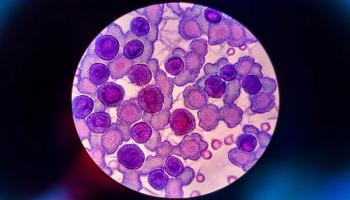
- October 2016 Diabetes
- Volume 82
- Issue 10
Case Studies (October 2016)
What should these pharmacists do?
CASE 1
HC, a 75-year-old man, comes to your pharmacy to purchase an OTC treatment for a fungal nail infection (onychomycosis) of the big toe on his left foot. He shows you his foot, and you observe that the affected nail is thickened and chipped and has a yellow-white color. HC is in generally good health. He has hypertension that is well controlled with lisinopril 20 mg once daily. He takes no other prescription or OTC medications.
As the pharmacist, what recommendations do you have for HC?
CASE 2
SJ is a 38-year-old man who was recently given a diagnosis of obsessive-compulsive disorder (OCD). He has undergone several months of cognitive behavioral therapy (CBT); however, SJ is frustrated with the amount of time the CBT sessions require and would like to try pharmacotherapy for treating his OCD. His medical history is remarkable for generalized anxiety disorder, which was diagnosed 6 years ago and treated with paroxetine. SJ had a desirable response and tolerated paroxetine but later discontinued it without consulting a health care provider, as he felt he no longer needed the medication. The physiatrist at your office asks you which medication SJ should be initiated on for his OCD.
As a clinical pharmacist, what pharmacotherapy do you recommend for SJ?
ANSWERS
Case 1:Onychomycosis is a common diagnosis (~10% incidence) in the general population, and the incidence increases with age (50% of individuals older than 70 years are affected). Onychomycosis can be caused by a variety of organisms, but most commonly results from infection by Trichophyton dermatophytes. The goal of onychomycosis treatment is to eradicate infection in order to improve the appearance of the nail and prevent complications such as cellulitis and foot ulcers, particularly in older adults and those with diabetes. Eradication of infection, however, can be challenging because nails are made of keratin, which is nonvascular and impermeable to many treatments. Although HC was seeking an OTC treatment, the pharmacist should inform him that few OTC treatments for onychomycosis have been sufficiently studied and that systemic treatment with antifungals (eg, fluconazole, itraconazole, terbinafine) has proved most effective. Of these, terbinafine has been observed to have the highest mycotic cure rate, exceeding 75%. The pharmacist should suggest that HC see his primary care provider to confirm the diagnosis of onychomycosis and to obtain a prescription for terbinafine 250 mg orally once daily for 12 weeks (as this is a toenail infection).
Case 2:According to the American Psychiatric Association guidelines, clomipramine and selective serotonin reuptake inhibitors (SSRIs), including fluoxetine, fluvoxamine, paroxetine and sertraline, are recommended for OCD. The use of SSRIs is preferred because they tend to be better tolerated than clomipramine. The various SSRIs do not appear to differ in efficacy; thus, the choice of agent is made based on factors such as tolerability and drug interactions. Because SJ previously tolerated paroxetine, it is a reasonable selection. SJ should be initiated on paroxetine 20 mg by mouth once daily. Paroxetine may be titrated by approximately 10 mg weekly to a total daily dose of 40 to 60 mg based on response. SJ should be reminded that he may not see improvement until approximately 4 to 6 weeks after starting the medication.
Dr. Weeda is an outcomes research fellow and Dr. Coleman is professor of pharmacy practice at the University of Connecticut School of Pharmacy in Storrs.
function showAnswer() {document.getElementById("answer").style.display = 'block';document.getElementById("link").style.display = 'none';}
Articles in this issue
about 9 years ago
Can You Read These Rxs? (October 2016)about 9 years ago
Pet Peeves (October 2016)about 9 years ago
Generic Product News (October 2016)about 9 years ago
Change Together for the Betterabout 9 years ago
Educational Pharmacogenetics Resources for Pharmacistsabout 9 years ago
Diabetes Prevalence Has Nearly Quadrupled Since 1980about 9 years ago
Metformin Still Underused in Patients with Type 2 Diabetesabout 9 years ago
Prescribing Antibiotics to Infants Increases Childhood Obesity RiskNewsletter
Stay informed on drug updates, treatment guidelines, and pharmacy practice trends—subscribe to Pharmacy Times for weekly clinical insights.

















































































































































































































